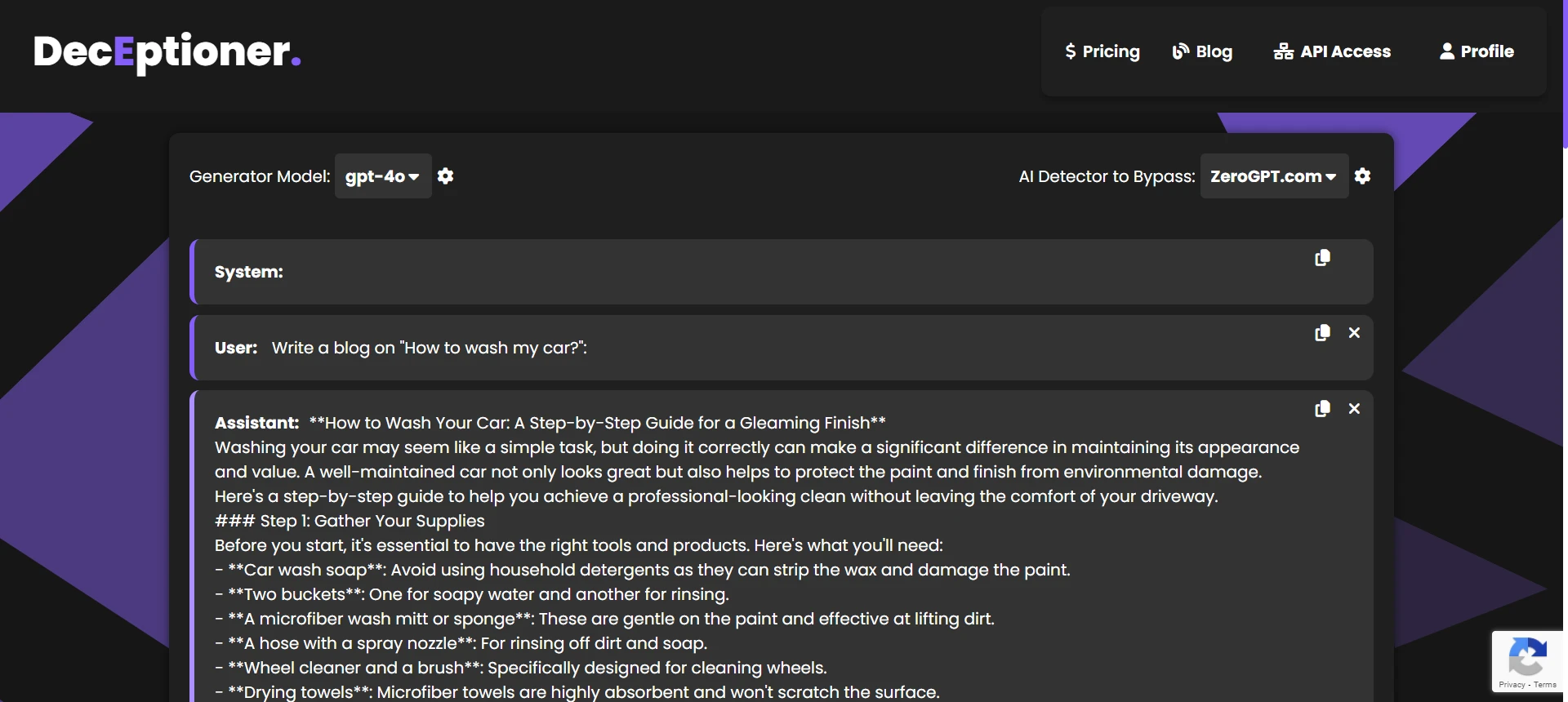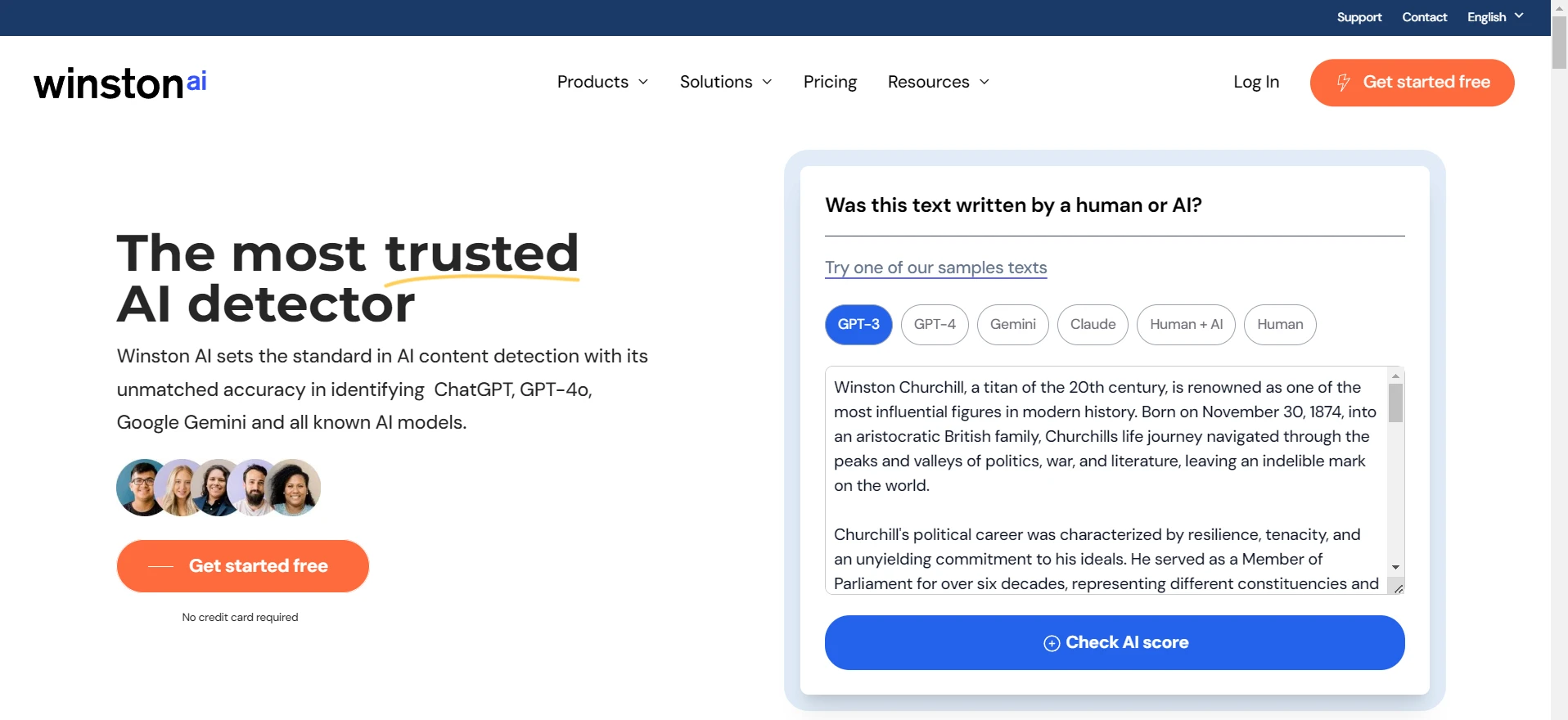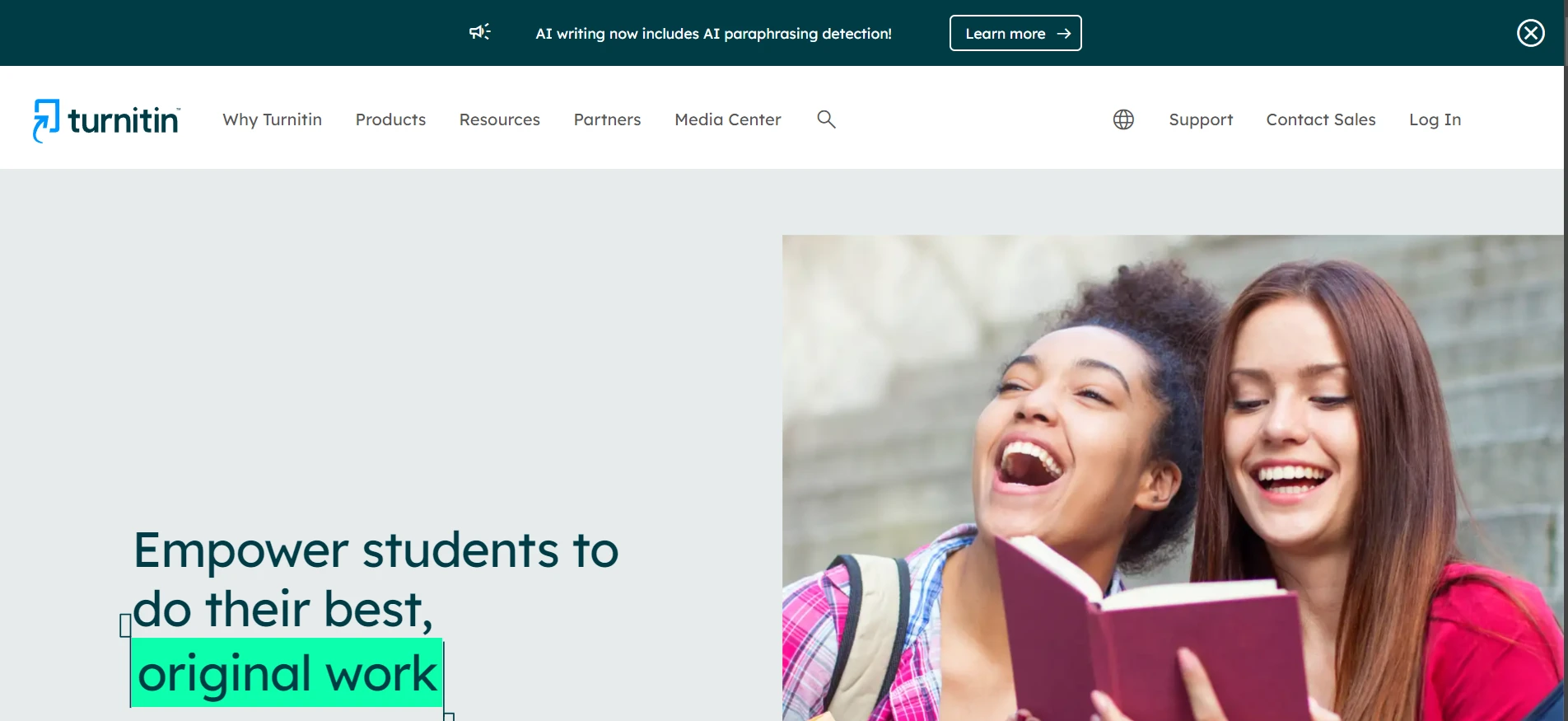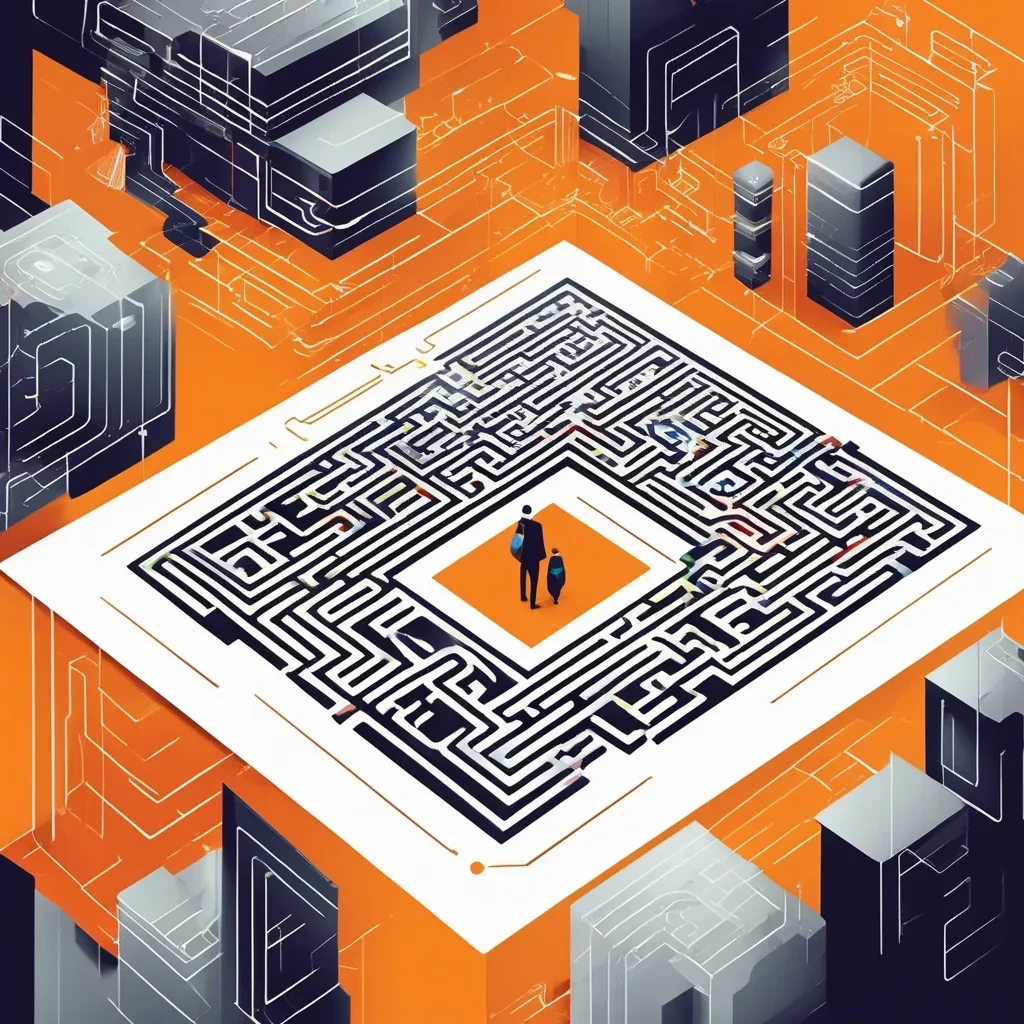As we all know, ZeroGPT is quite popular for detecting AI text. However, is it just as accurate as Turnitin? The short answer is NO. The longer answer is that the devil lies in the details, especially once you see the statistics. Keep reading to know more about it.
Why ZeroGPT sometimes fails to catch or mislabel AI text?
On their website, ZeroGPT never claims to be an ultra-protective tool for AI detection with nearly zero false positives. It’s there as a general AI detector, and from my personal vantage point, it doesn’t try to be super conservative in catching AI. Hence, it is prone to mislabeling human text as AI.
Turnitin, on the other hand, is used in many universities and it is specifically geared to detect AI content more accurately. There is a reason they hold such a strong brand recognition in the academic space. Now let’s see if the data also matches that reputation.
What the numbers say?
I recently tested about 160 documents (a combination of AI-generated and genuinely human-written). Both ZeroGPT and Turnitin were run on them at the usual threshold (0.5). That means if the score is ≥ 0.5 (i.e., ≥50%), the detector labels it “AI.” Here are the global metrics we got:
1) Turnitin @ 0.5 threshold
- Accuracy = 82.5%
- Precision = 98.2%
- Recall = 67.1%
- F1 = 0.797
- False Positive Rate (FPR) = 1.3%
- ROC–AUC = 0.874
- PR–AUC = 0.886
2) ZeroGPT @ 0.5 threshold
- Accuracy = 73.8%
- Precision = 77.8%
- Recall = 68.3%
- F1 = 0.727
- False Positive Rate (FPR) = 20.5%
- ROC–AUC = 0.805
- PR–AUC = 0.856
How to read these charts?
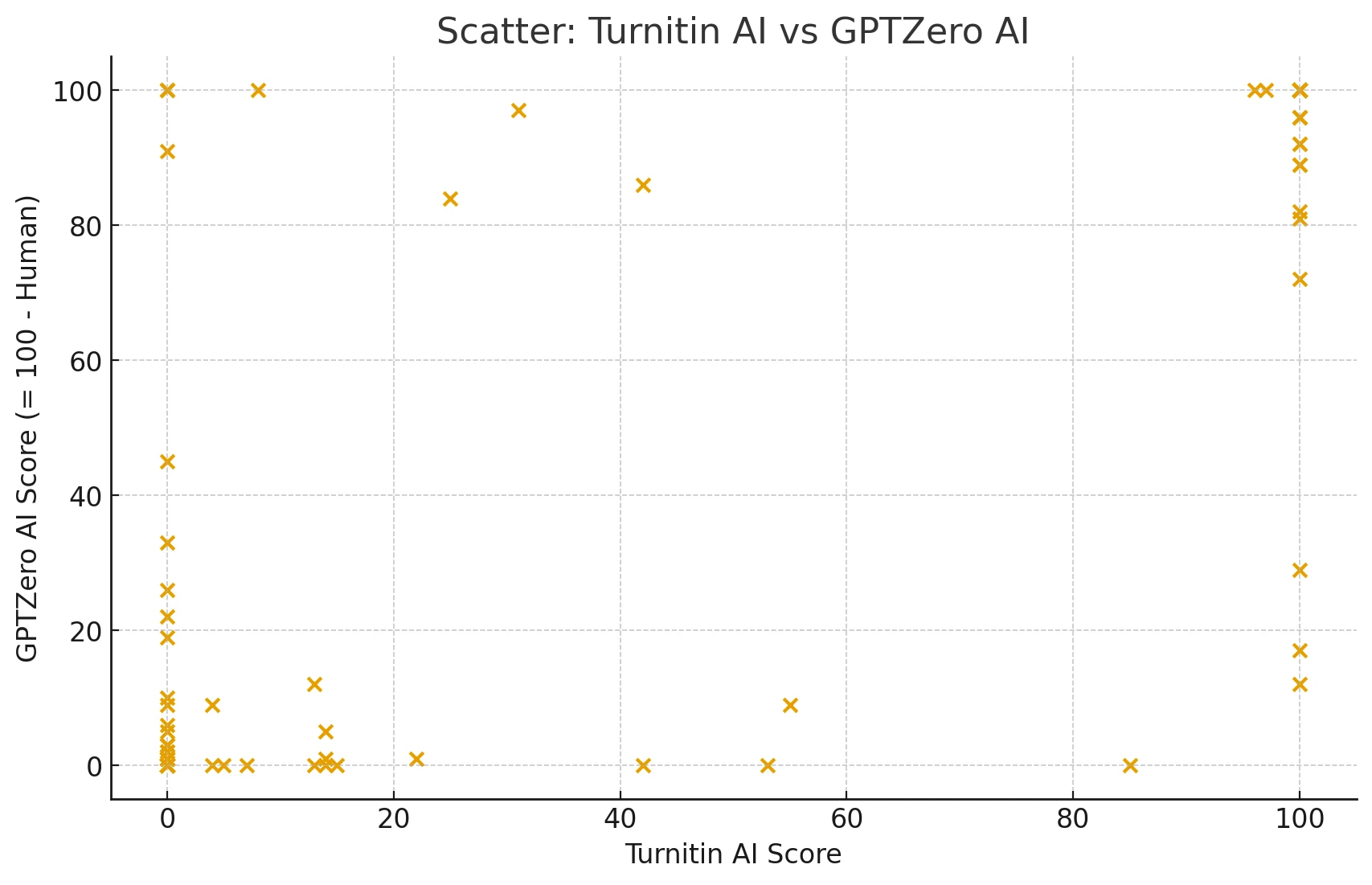
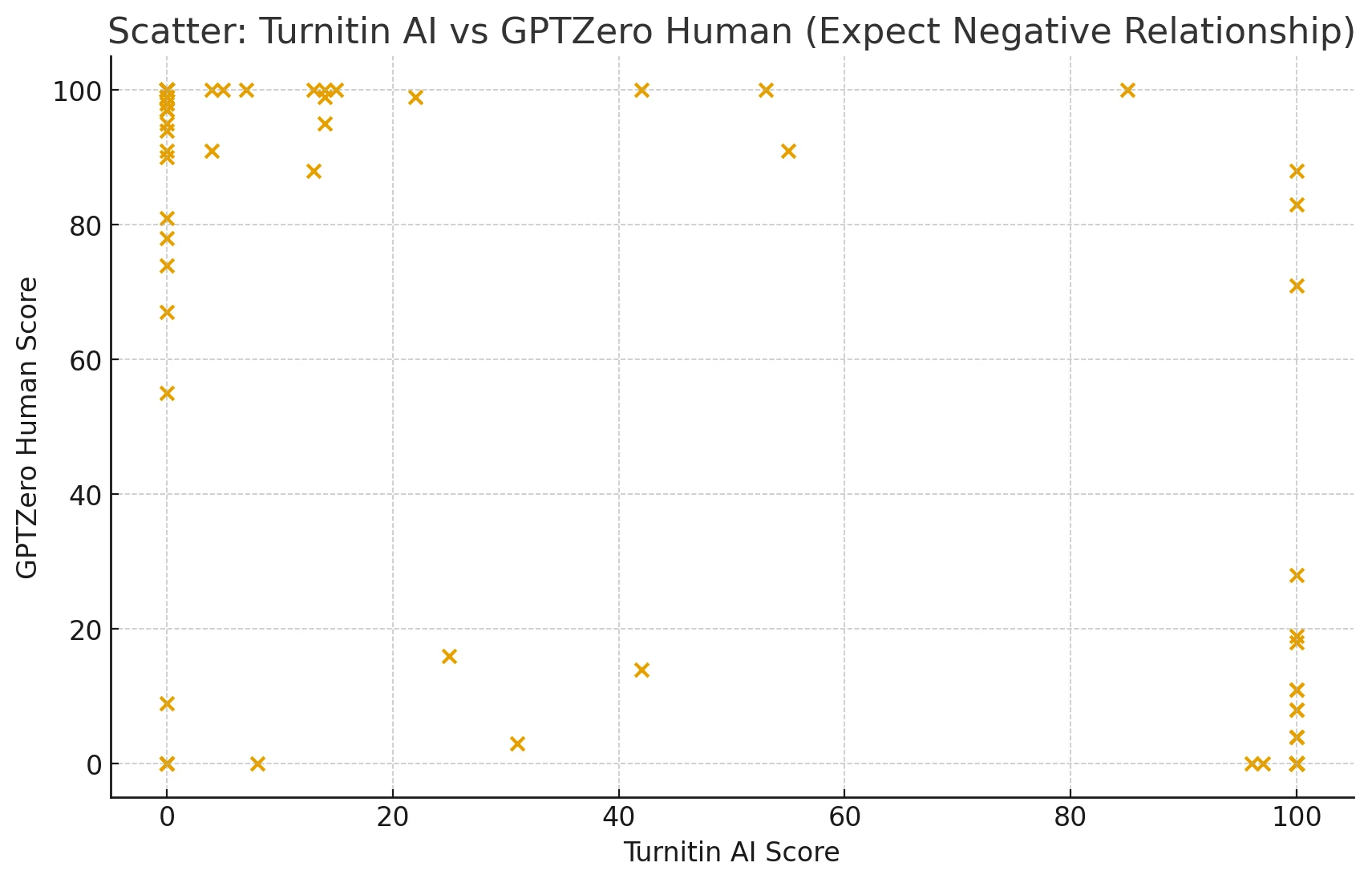
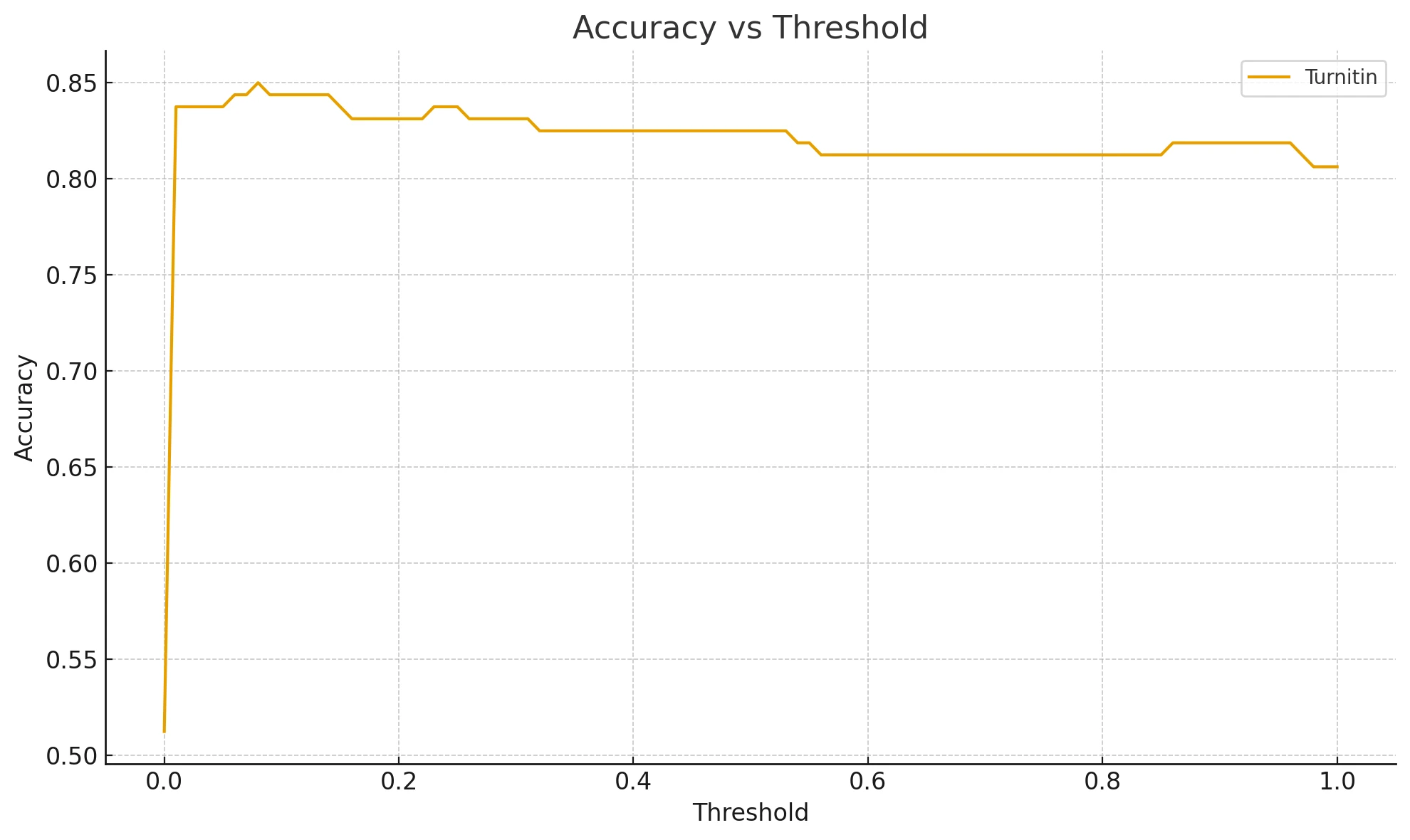
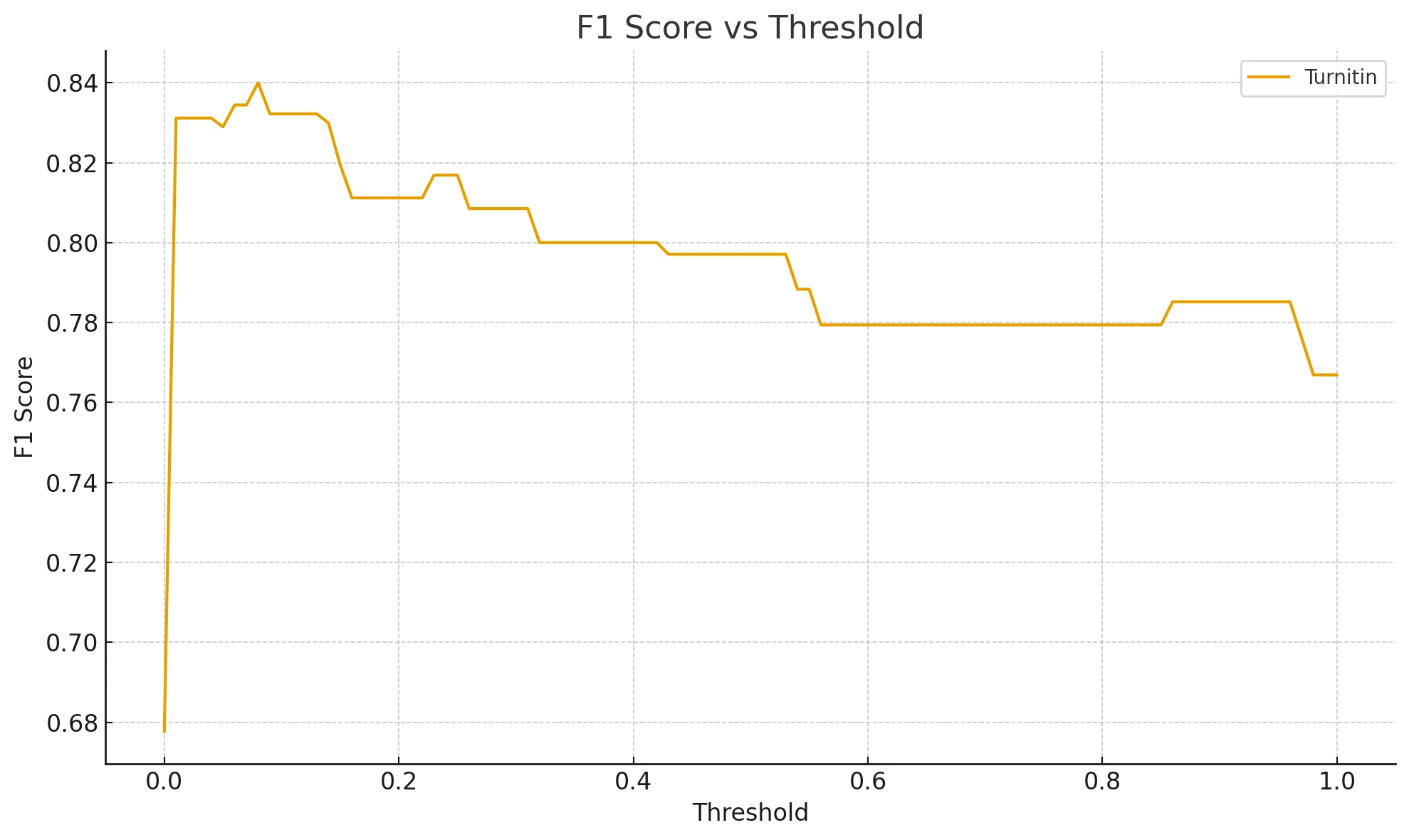
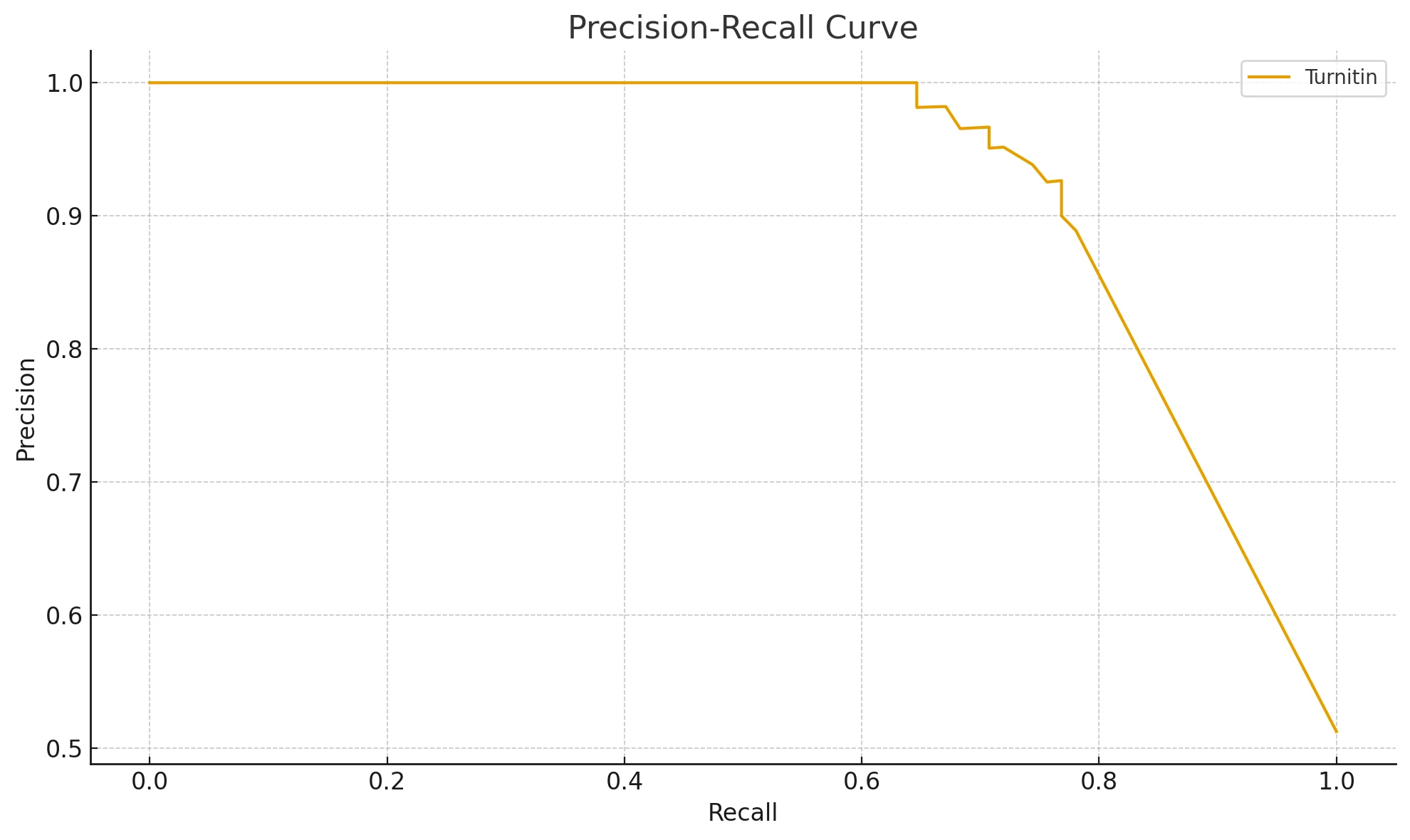
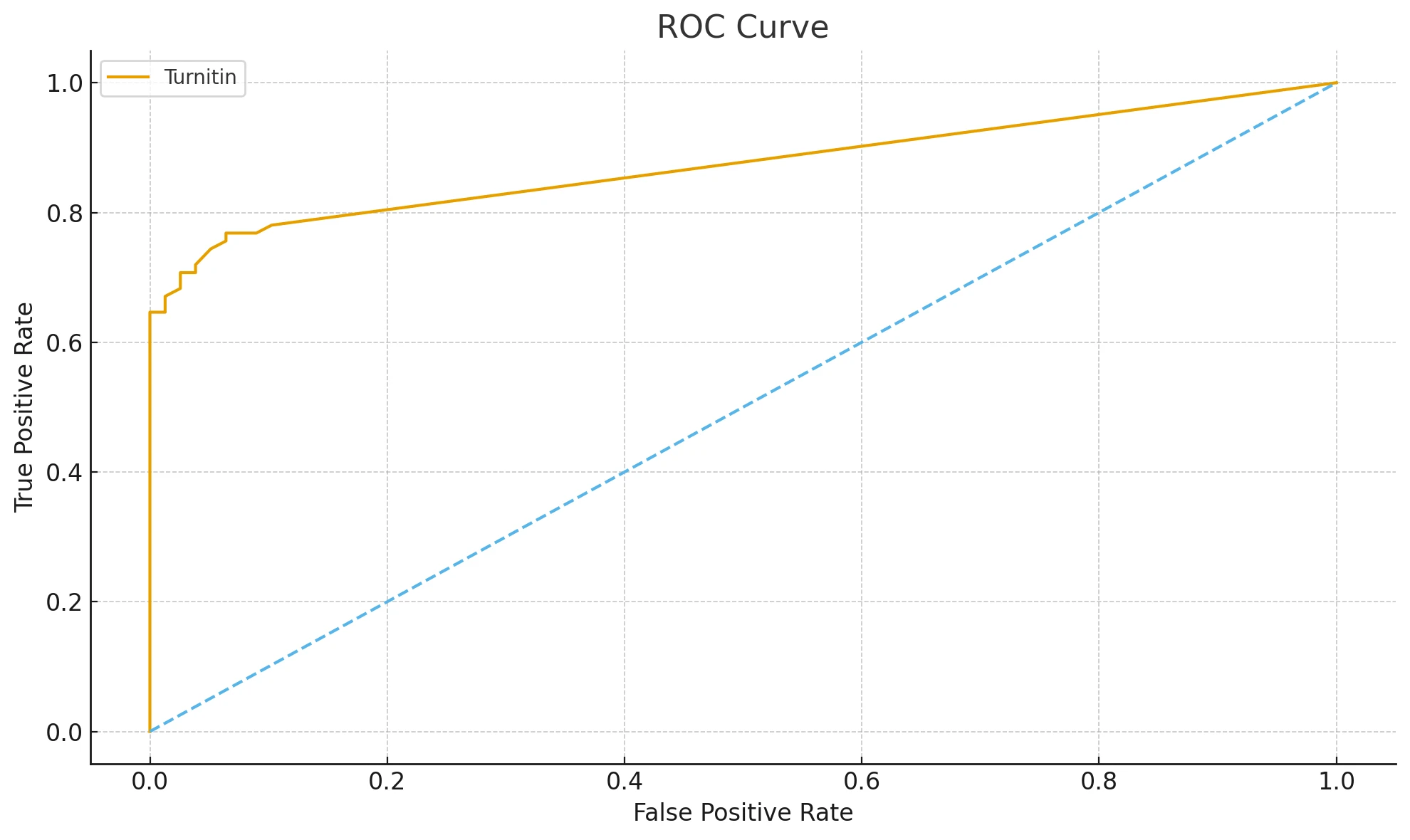
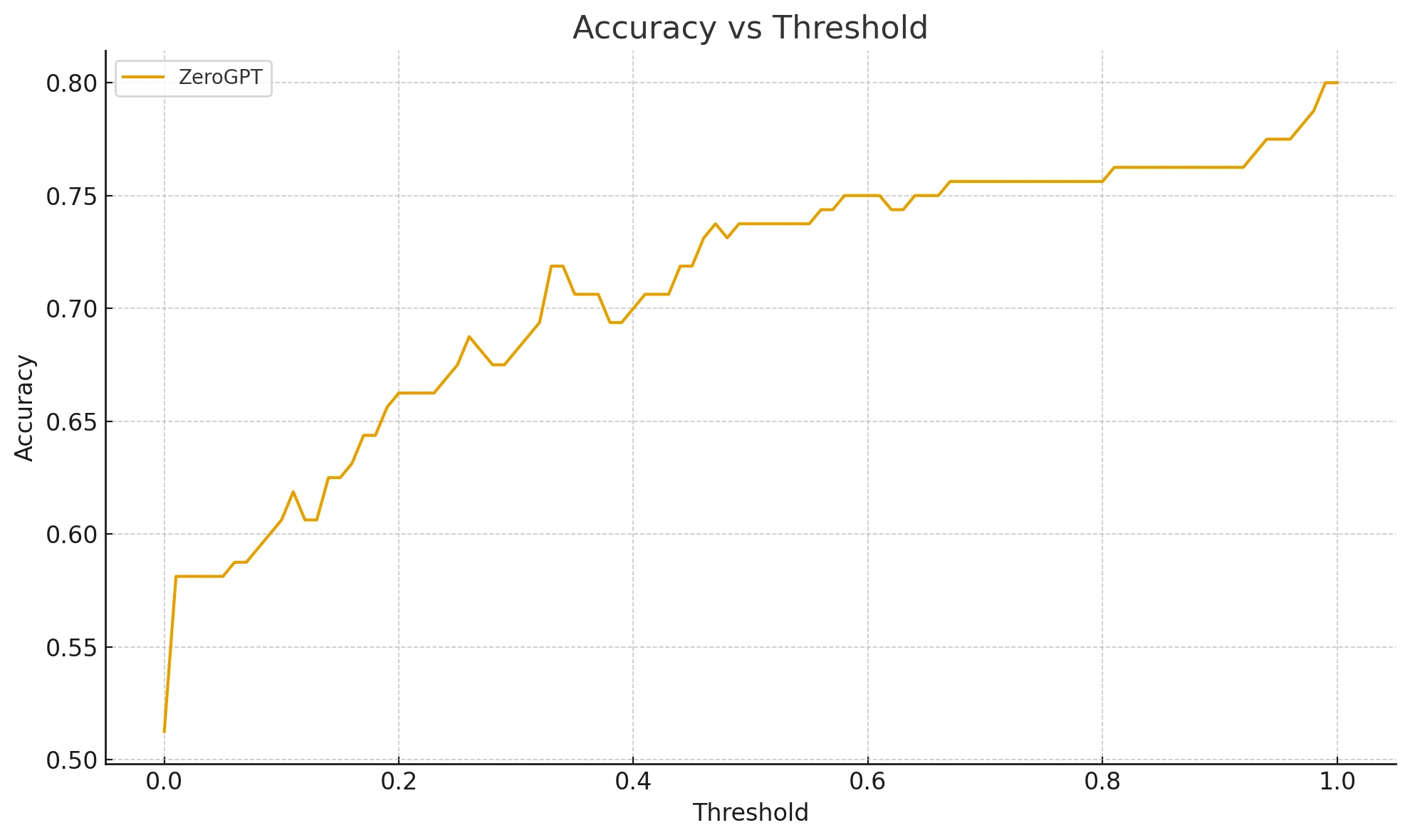
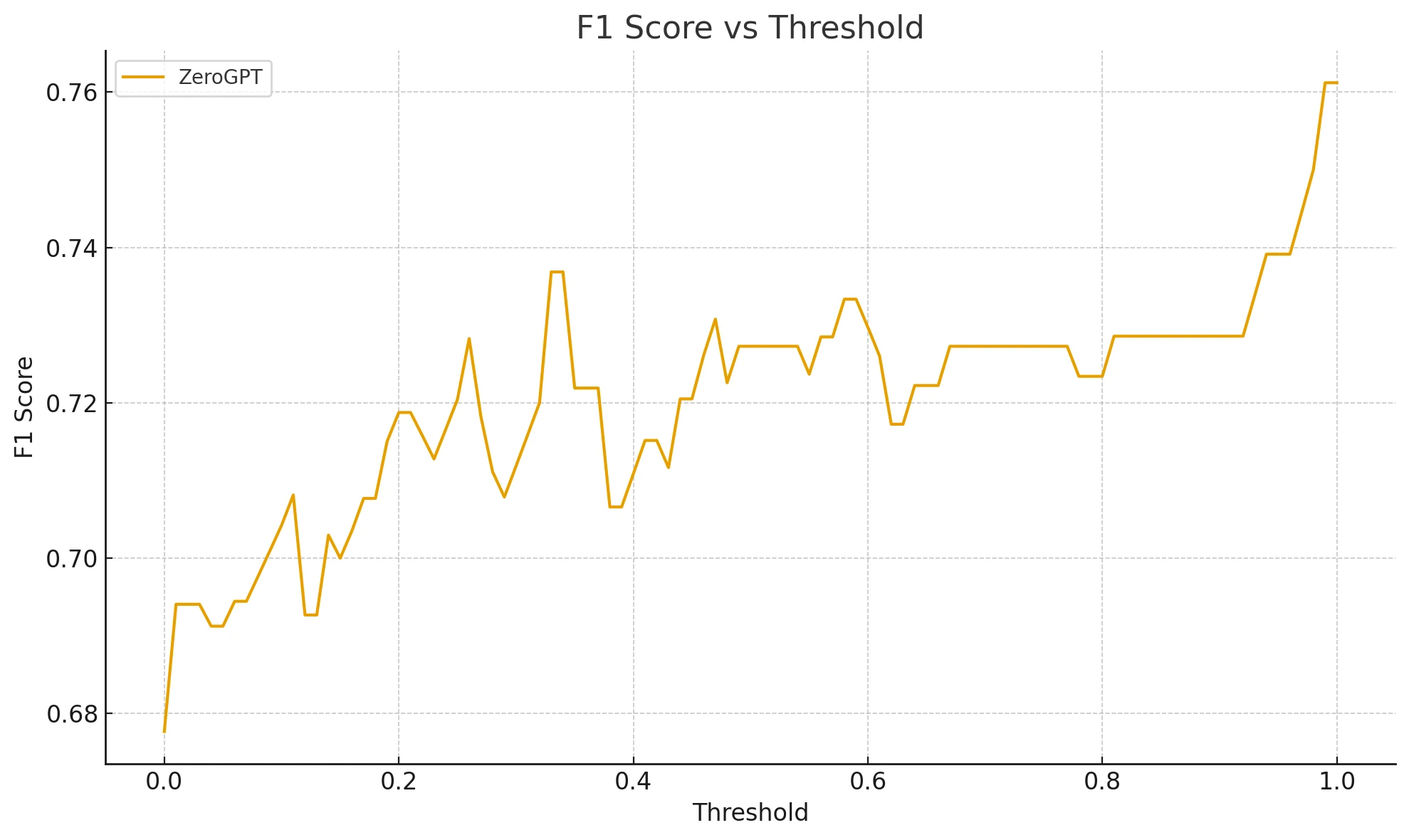
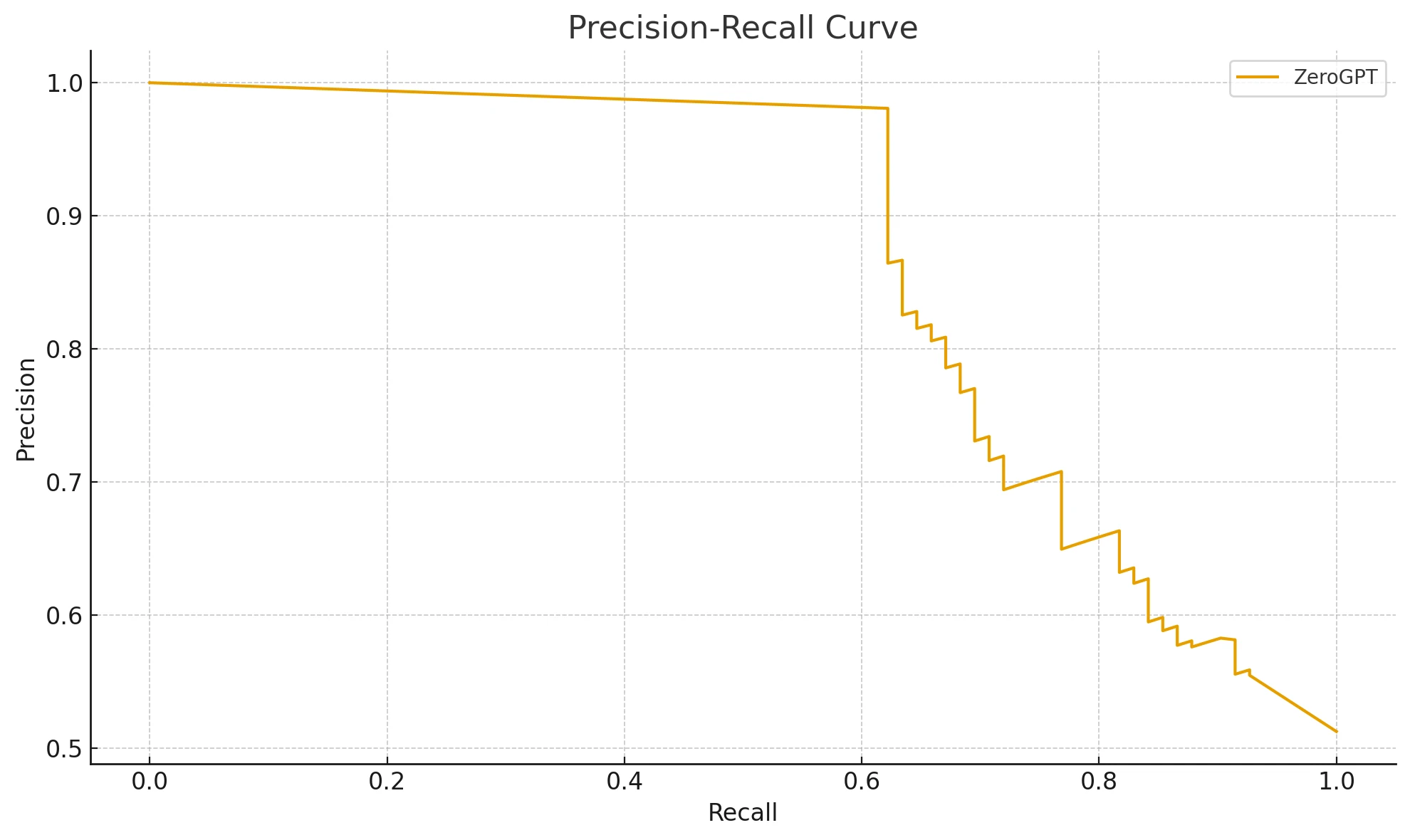
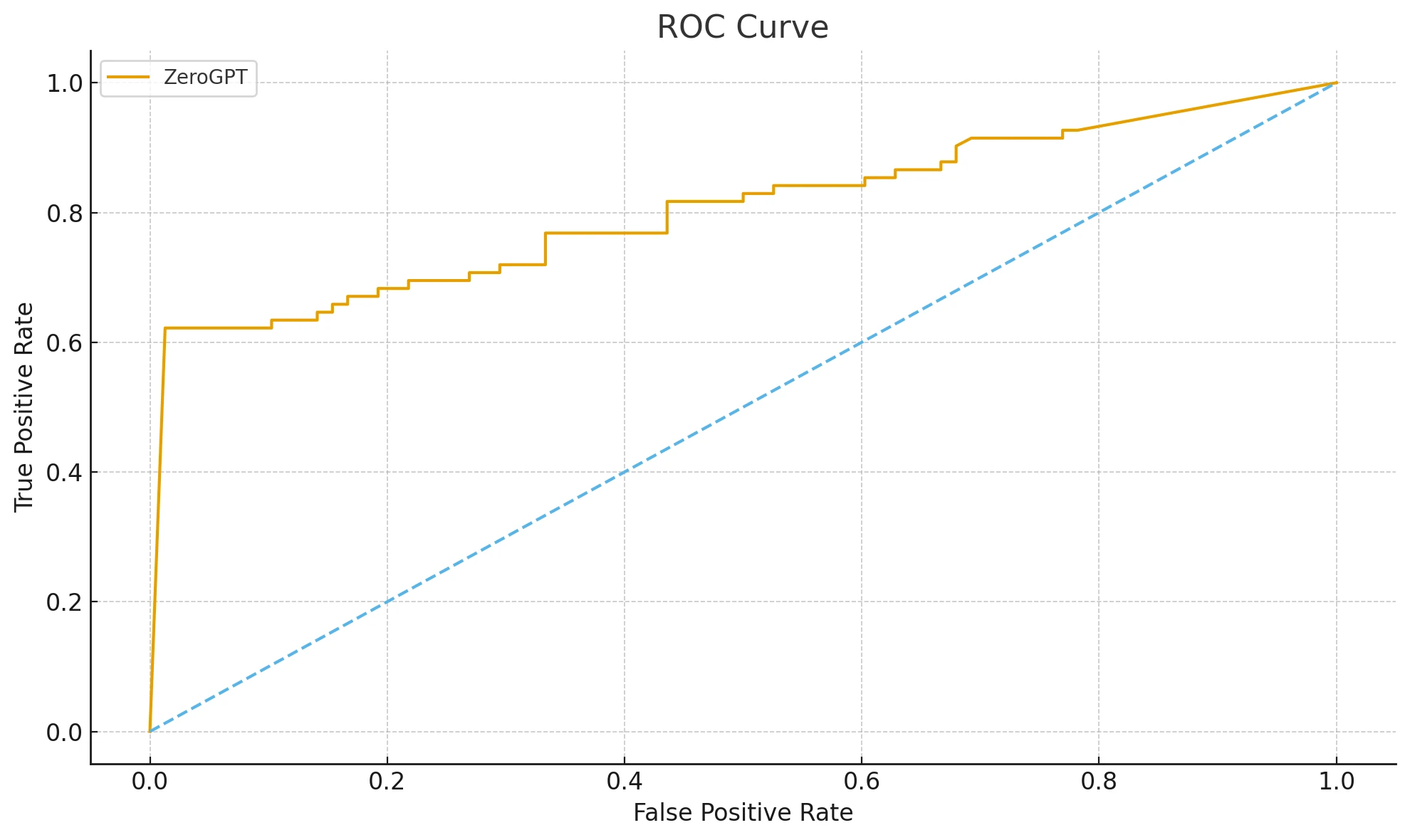
- ROC curves: Turnitin’s curve sits above ZeroGPT’s, indicating Turnitin is better at ranking texts from most-AI to least-AI across various thresholds.
- Precision–Recall curves: Turnitin’s precision stays very high over a wide range of recall levels, meaning it rarely mislabels human text as AI. Meanwhile, ZeroGPT’s precision drops significantly if you push it to detect more AI text.
- Threshold sweeps: Turnitin remains consistently strong no matter what threshold you pick. ZeroGPT’s performance can drastically change if you tweak the threshold.
- Score distributions: Turnitin’s scores polarize near 0% or 100%, making labeling straightforward. ZeroGPT’s scores are more spread out, so its decisions rely heavily on picking the right threshold.
Best threshold for each tool?
After tweaking thresholds for optimal results on these 160 texts:
- ZeroGPT works best at a very strict threshold (~0.98), giving an F1 ≈ 0.761. This reduces false accusations but also means it only calls AI when it’s super sure.
- Turnitin works best at a very permissive threshold (~0.07) and still achieves an F1 ≈ 0.840, thanks to its polarized scoring.
So which one is safer if you want to minimize false positives?
It is undoubtedly Turnitin. At the usual 0.5 cutoff, ZeroGPT has a 20.5% false-positive rate (about 1 in 5), while Turnitin’s is only 1.3% (about 1 in 77).
Personal Experience
When I tested these tools over the weeks, I was shocked at how many times ZeroGPT flagged my friend’s hand-written sociology reports. She used casual grammar and anecdotes—still, ZeroGPT labeled it as AI. Meanwhile, Turnitin seldom flagged them.
Frequently Asked Questions
Q1. Is Turnitin more accurate than ZeroGPT?
Yes, absolutely. At a 0.5 threshold, Turnitin shows 82.5% accuracy while ZeroGPT is 73.8%.
Q2. Does ZeroGPT always flag a lot of human content as AI?
At the default threshold, yes—20.5% false positives. You can reduce that by picking a stricter threshold (e.g., 0.98), but that also lowers its AI detection rate.
Q3. What does ROC–AUC actually mean?
ROC–AUC is the “Area Under the Receiver Operating Characteristic Curve.” It plots true positive rate vs. false positive rate at different thresholds. A larger area means better ranking ability.
Q4. Can I trust Turnitin to never flag a legitimate essay?
No AI detector is perfect. Turnitin’s false-positive rate is about 1.3%, which can still happen. But compared to ZeroGPT’s 20.5% at the same threshold, Turnitin is much safer.
Q5. What if I want to catch nearly all AI text?
You’d focus on recall, but that usually lowers precision (increases false positives). Both tools catch around 67% of AI texts at 0.5, but Turnitin maintains much higher precision.
The Bottom Line
On this dataset of 160 texts, Turnitin trumps ZeroGPT in almost every metric. It has higher overall accuracy (82.5% vs. 73.8%) and far fewer false accusations (1.3% vs. 20.5%). You can make ZeroGPT safer by raising its threshold, but Turnitin still offers a superior balance of precision and recall. If your main objective is avoiding false positives, Turnitin is the safer bet—there is simply no contest.

![[SHORT STUDY] How Accurate is ZeroGPT Compared to Turnitin?](/static/images/how-accurate-is-zerogpt-compared-to-turnitinpng.webp)
![[STUDY] Can Phrasly AI Humanizer Bypass ZeroGPT?](/static/images/can-phrasly-ai-humanizer-bypass-zerogptpng.webp)
![[STUDY] Can Phrasly AI Bypass Turnitin?](/static/images/can-phrasly-ai-bypass-turnitinpng.webp)
![[HOT TAKE] Is Winston AI or GPTZero more accurate?](/static/images/is-winston-ai-or-gptzero-more-accuratepng.webp)
![[NO NONSENSE ANSWER] Is Turndetect Permanently Down?](/static/images/is-turndetect-downpng.webp)
